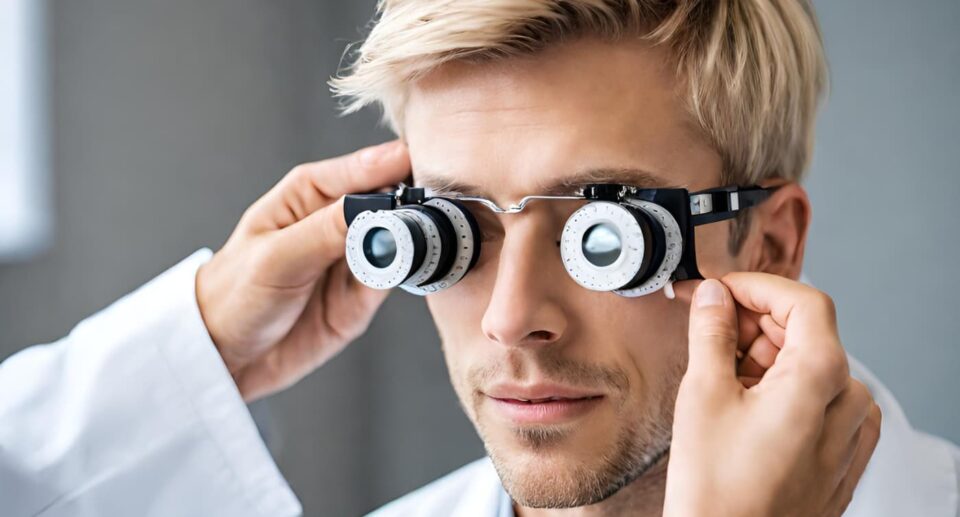LASIK for Athletes: Improving Performance and Quality of Life

Athletes, regardless of their sport, rely heavily on their vision. Whether it’s tracking a baseball hurtling towards them, maintaining precise aim in shooting sports, or quickly reacting to opponents on the field, clear and accurate vision is a game-changer. Many athletes turn to LASIK surgery to enhance their visual capabilities, improve their performance, and ultimately elevate their quality of life. In this article we ll discuss the steps in preparing for LASIK.
Enhancing Athletic Performance with LASIK
In the competitive world of sports, the difference between winning and losing can often come down to split-second decisions and precise execution. Athletes continuously strive to maximize their physical and mental abilities, seeking any advantage that can give them the edge. One such advantage that has gained popularity among athletes is LASIK surgery. This procedure offers the promise of enhanced vision, potentially leading to improved athletic performance and an overall better quality of life.
The Impact of Vision on Athletic Performance
The significance of vision in sports cannot be overstated. It affects numerous aspects of athletic performance, including accuracy, reaction time, depth perception, and hand-eye coordination. Athletes with vision impairments may struggle with tasks that require split-second decisions, putting them at a disadvantage.
Understanding LASIK Surgery
LASIK, or Laser-Assisted In Situ Keratomileusis, is a popular vision correction procedure that has transformed the lives of countless individuals, including athletes. This surgery involves reshaping the cornea using a laser to correct refractive errors such as nearsightedness, farsightedness, and astigmatism. LASIK is known for its quick recovery time and the ability to provide clear vision without the need for glasses or contact lenses.
The Vital Role of Vision in Sports
Vision is a cornerstone of athletic success, influencing an athlete’s performance in multiple ways. From tracking fast-moving objects to maintaining focus on distant targets, an athlete’s visual acuity is fundamental to their ability to excel in their respective sport. Here are some key aspects of athletic performance where vision plays a critical role:
- Hand-Eye Coordination: Many sports require precise hand-eye coordination, such as baseball, tennis, and archery. Athletes rely on their vision to accurately time and execute their movements.
- Depth Perception: Accurate depth perception is essential for sports like basketball and soccer, where judging the distance to a target or opponent can make the difference between success and failure.
- Reaction Time: Split-second reactions are vital in sports like boxing, table tennis, and fencing. Athletes need to quickly process visual information and respond accordingly.
- Peripheral Vision: Sports like football and basketball demand excellent peripheral vision to be aware of teammates, opponents, and the game’s dynamics as a whole.
- Focus and Concentration: Maintaining focus over extended periods is crucial in endurance sports like marathon running and cycling. Clear vision can help athletes stay concentrated on their goals.
Understanding LASIK Surgery
LASIK, or Laser-Assisted In Situ Keratomileusis, is a laser eye surgery designed to correct common vision problems, including nearsightedness (myopia), farsightedness (hyperopia), and astigmatism. The procedure reshapes the cornea, the clear front part of the eye, to improve how light rays are focused onto the retina. LASIK is renowned for its rapid recovery time and the potential to provide clear vision without the need for glasses or contact lenses.
The Decision to Undergo LASIK
Athletes considering LASIK should begin their journey by consulting with an experienced eye surgeon who specializes in the procedure. The initial consultation is a critical step where the surgeon evaluates the athlete’s eyes, discusses their visual goals, and determines their eligibility for LASIK. Factors such as the athlete’s current eye health, prescription, and overall health will be assessed.
LASIK and Farsightedness
Can LASIK fix farsightedness? Farsightedness, or hyperopia, is a common refractive error that makes it difficult to see objects up close. Athletes with hyperopia often struggle with tasks that require near vision, which can affect their performance. LASIK is a particularly appealing option for farsighted athletes, as it can reshape the cornea to address this specific refractive error, allowing for improved near vision.
Preparing for LASIK
Before undergoing LASIK surgery, athletes should take several important steps to ensure a successful procedure. Firstly, they must find a qualified eye surgeon with expertise in LASIK. A thorough consultation will help determine if LASIK is the right choice for their vision needs and lifestyle. Athletes should also be prepared for a brief recovery period, during which they may need to take a break from training and competition.
LASIK Recovery and Returning to Sports
One of the appealing aspects of LASIK for athletes is the relatively quick recovery period. Many individuals experience improved vision within hours of the procedure. However, athletes must follow their surgeon’s post-operative instructions carefully. While LASIK recovery is generally rapid, there are some precautions athletes should take:
- Avoidance of Contact Sports: Athletes involved in contact sports, like football or martial arts, may need to refrain from participating for a specific duration post-surgery. Eye protection and safety are paramount during this period.
- Proper Eye Care: Following LASIK, athletes should maintain proper eye hygiene and adhere to the prescribed medications to minimize the risk of infection and promote healing.
- Scheduled Follow-Up Appointments: Athletes will typically have follow-up appointments with their eye surgeon to monitor their progress and ensure their eyes are healing correctly.
Conclusion
While LASIK offers many benefits to athletes, it’s crucial to be aware of potential risks and considerations. Common side effects include temporary dry eyes and sensitivity to light, but serious complications are rare. Athletes should discuss any concerns with their eye surgeon to make an informed decision about LASIK.
LASIK surgery has become a game-changer for athletes seeking to improve their performance and overall quality of life. With its ability to correct refractive errors and provide clear vision, LASIK can be a game-winning strategy for athletes from various sports. Athletes considering LASIK should consult with a qualified eye surgeon to explore how this procedure can help them achieve their vision goals and excel in their chosen athletic pursuits.




